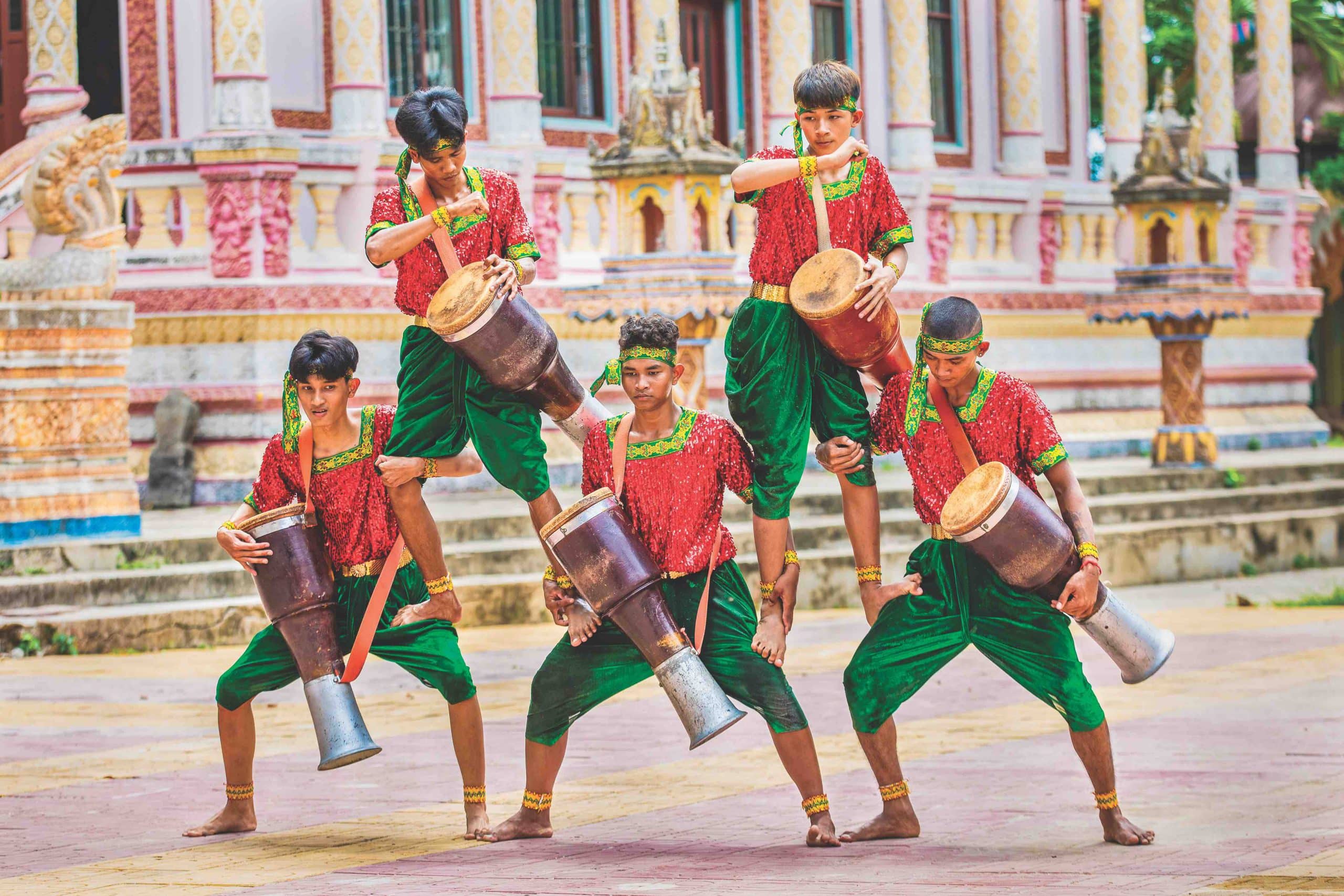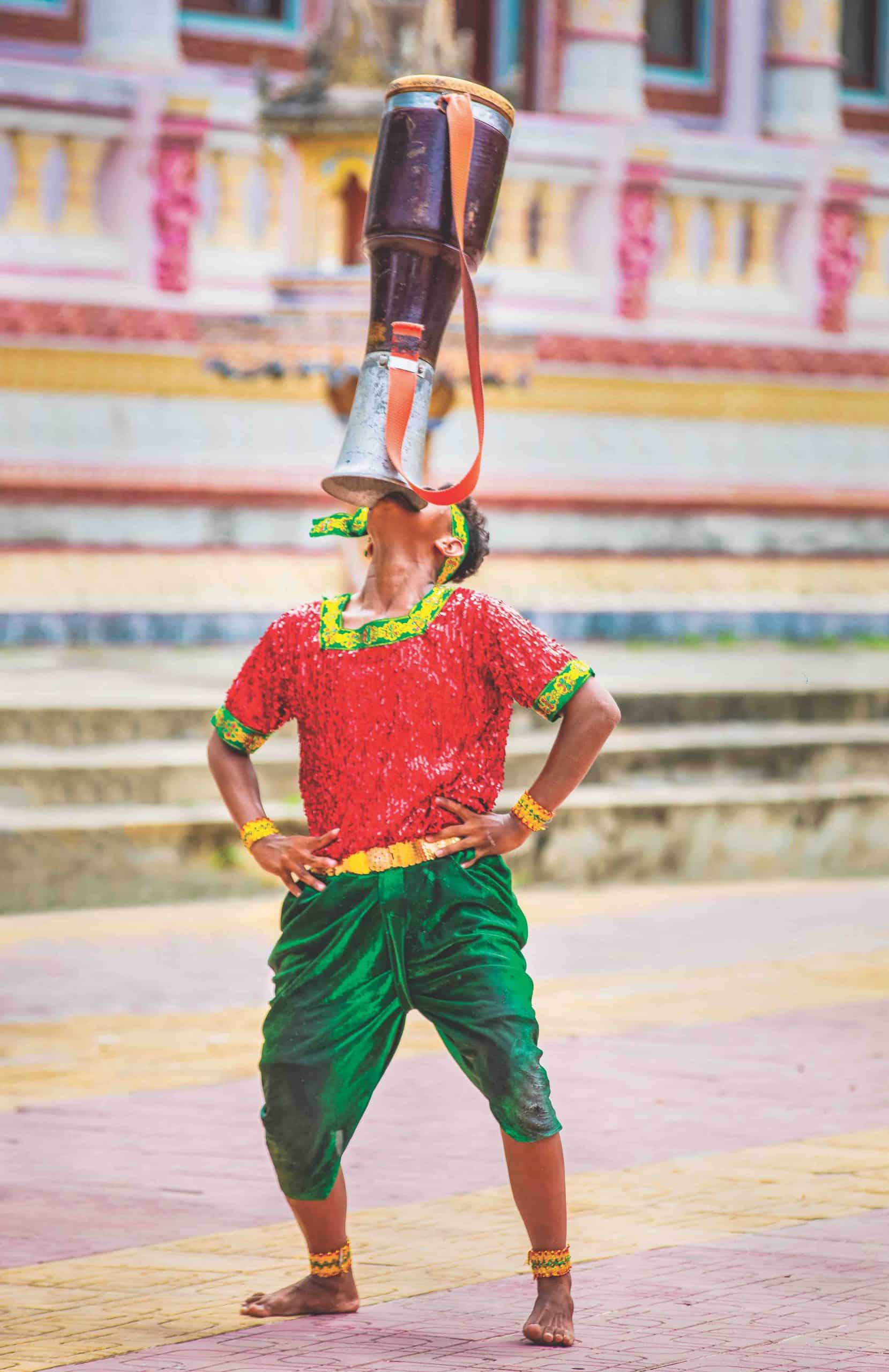Story: Huynh Phuong
Photos: Huynh Dong
The land of Tay Ninh boasts many unique intangible cultural heritages, including the Chhay-dam drum dance – a folk art practiced by Khmer people in Truong Tay commune, Hoa Thanh town.

The Chhay-dam drum dance is closely tied to the traditional culture of the Khmer people, the largest ethnic group among the 21 ethnic groups residing in Tay Ninh province. According to records, the Chhay-dam drum dance in this area differs from that performed in some other provinces in the Southern region. Around 1953, the late Cambodian Prince Norodom Sihanouk (1922-2012) gifted the Tay Ninh Holy See a set of Khmer musical instruments, including three Chhay-dam drums. Initially, these drums were used to set a beat during rituals at the Holy See. Later, they were used during dragon and unicorn dances.
Chhay-dam drums in Tay Ninh
Documents also note that Truong Tay commune is the “cradle” of Chhay-dam drum dancing in Tay Ninh. Here, a Khmer family in Truong An hamlet has been teaching Chhay-dam drumming to children for decades. Currently, Ms. Cao Thi Thu Loan (born in 1983) continues her family’s tradition of passionately teaching this special drum dance. The number of Chhay-dam drums in Tay Ninh has risen, and drum dance routines have adapted and grown more diverse. Drum dances are performed during special occasions such as the traditional Chol Chnam Thmay New Year and the Sen Dolta ancestor worship festival.

Mr. Le Minh Tuan, a Chhay-dam drum dance artist (and Ms. Cao Thi Thu Loan’s husband), said he and his dance team often perform at tourist spots in Tay Ninh and at famous Khmer temples. Mr. Tuan shared that the drums are hollowed out from the trunks of old areca palms, with the drumheads made of dried buffalo or python skin. The drum’s base is smaller and connected to a metal stand. A typical drum dance performance includes four to six Chhay-dam drums and two Cuol (gongs), along with Chul (cymbals) and Krap (clappers).
The art of drum dancing
One distinguishing feature of Chhay-dam drum dances in Tay Ninh is that the dancers need not wear makeup or have any musical accompaniment when performing. They can flexibly perform solo, in pairs, trios, or in groups, playing the drums with their hands and feet. The primary rhythm patterns are “cắc tùm tum, tum tụp, cắc tùm tum” played at the junction of the drum’s body and head, and “tum tụp” played directly on the drumhead, sometimes slowly and gently, or quickly and forcefully. Simple drumming techniques include slapping the drumhead with the hands. More complex techniques involve the use of elbows, knees, and heels. The drum dance also incorporates choreography and martial arts moves such as stances, swift hand movements, and agile acrobatics, making it visually impressive. Therefore, drum dancers must be strong, flexible, and skillful.
Preserving the heritage of Chhay-dam drum dances
To preserve and promote the value of this heritage, local authorities in Tay Ninh work to facilitate traditional cultural activities for the Khmer community and provide financial support for training and teaching Chhay-dam drum dances to the younger generation. Khmer artists often perform these iconic drum dances at local events. At the Khmer Ethnic Cultural House in Truong An hamlet, Truong Tay commune, two Chhay-dam drum teams regularly practice, each with more than ten members. There are also many drum teams with hundreds of dancers in other communes in Hoa Thanh town. These drum dance teams practice with great enthusiasm, aiming to spread the unique cultural features of the Khmer people to the wider community.
The Chhay-dam drum dance of the Khmer people in Truong Tay commune, Hoa Thanh town was recognized as a National Intangible Cultural Heritage by the Ministry of Culture, Sports, and Tourism in December 2014.










